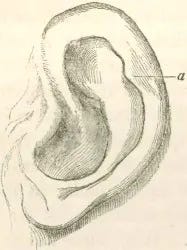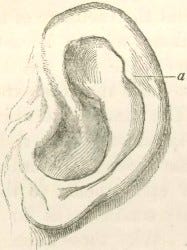Have Doctors Lost Our Physical Exam Skills?
Since medical technology has taken over the physical examination in many cases, doctors’ hands-on skills have decayed.
Does your doctor really know how to use a stethoscope or palpate your abdomen?
Today’s physicians do not have the physical exam skills that our predecessors did. We can argue whether this has diminished medical quality. I’m not sure that it has. But it has completely changed how medicine is practiced. The reason for declining physical exam skills is that technology has, to a significant extent, supplanted physicians’ hands, eyes, and ears.
In the olden days, the stethoscope was the diagnostic tool for examining hearts. Ask your doctor when was the last time he or she percussed the abdomen. I spent a month as a medical student with a legendary cardiologist who could make all kinds of cardiac diagnoses right at the bedside using two advanced medical instruments known as ears. Surgeons and gastroenterologists in years past had to make diagnoses of acute appendicitis and other abdominal emergencies based on feel and their “gut". Neurologists made accurate diagnoses of stroke just using their clinical skills.
These days, there is really no need to be a sleuth with a stethoscope, since any murmur or extra click heard by a human will be followed by an echocardiogram. I can’t recall a case of appendicitis in my career that didn’t involve a CAT scan to confirm a surgeon’s suspicion. And, if a stroke is suspected, a head CAT scan will be arranged.
Since medical technology has in many cases taken over the physical examination, doctors’ hands-on skills have decayed. There is much less pressure for our exam skills to be superb, since we know that some rescue scan or diagnostic test that does it better will follow. Conversely, if a physician were seeing a patient with stomach pain, and there was no technology available, I surmise that this doctor would do a more careful exam than he otherwise would. Get my point?
Are patients better served with more accurate technology to make and exclude diagnoses? Some are and many aren’t. We all celebrate how technology in medicine has revolutionized the profession and has saved and improved lives. I rely upon this every day in my practice. But we must acknowledge that this progress has exacted many costs. Poorly or hastily chosen diagnostic tests can lead patients down false pathways. A CAT scan is not a physician. It does not understand the nuances of the patient’s situation. It cannot place the scan’s findings into the context of a living, breathing human being. It’s data to be considered by the medical professional along with many other clinical factors. What if the scan, for example, suggests Crohn's disease but the sentient physician knows this is not the case?
Will there be a role for medical professionals once artificial intelligence becomes embedded in the medical landscape? Will AI replace physicians’ cognitive skills just as our physical examination skills have decayed? Is this just fanciful science fiction? Here's my own response to these inquiries: Would you have believed 10 years ago that cars and trucks would be driving themselves? What seems impossible today may become reality tomorrow.





I recently learned a new word for this phenomenon: Hyposkillia. https://acdw.substack.com/p/hyposkillia-a-widespread-clinician
For generations, doctors have relied on hands-on physical exams, listening to heartbeats, feeling for lumps, checking reflexes. But today’s physicians increasingly depend on high-tech scans and lab tests, which can be expensive and time-consuming. Critics worry this shift is eroding essential examination skills and reducing face-to-face time with patients.
Yet physical exams aren’t foolproof either. Even experienced doctors sometimes struggle with basics like detecting a pulse during emergencies. That ix where portable ultrasound comes in, offering real-time images right at the bedside.
I see ultrasound as the perfect middle ground, combining cutting-edge technology with traditional bedside care. The future looks even more promising: patients with heart conditions might soon use handheld ultrasound devices at home, guided by AI, to monitor their condition and share results with their doctors instantly.
This is not science fiction. On the International Space Station, astronauts with zero medical training already use ultrasound to diagnose injuries and eye problems, guided by doctors on Earth. According to NASA experts, just a few hours of training can teach anyone to capture useful medical images. As AI improves and costs drop, ultrasound could become the norm for all doctors and students.
The price of a handheld ultrasound today is around three to five thousand dollars, low enough that a number of American medical schools have begun giving handheld ultrasound probes to their first-year students.